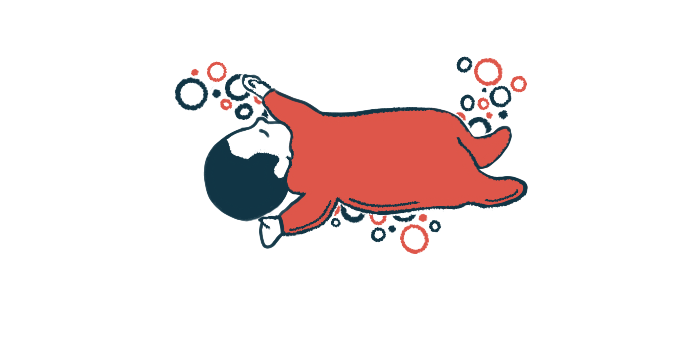Swiss newborn screening spots CF in 96% of cases across 11 years
Review of program finds 'good performance,' minor changes recommended
Written by |

Newborn screening (NBS) in Switzerland correctly identified 96% of cystic fibrosis (CF) cases over an 11-year period, a study found.
False negatives, instances where tests are negative but an infant has CF, occurred in 10 out of 272 diagnosed cases.
Still, the program did not achieve a positive predictive value (PPV) of at least 30%, which refers to the proportion of positive tests that lead to a CF diagnosis. A PPV of 30% or better is among the standards set by the European CF Society.
Details of Swiss NBS for cystic fibrosis were in the study “Cystic fibrosis newborn screening in Switzerland – evaluation and scenarios for improvement after 11 years of follow-up,” published in the Journal of Cystic Fibrosis.
Newborn screening for CF is essential for an early start to treatment
In many countries, newborn screening for CF is essential for an early disease diagnosis. Its goal is to detect CF in an infant as soon after birth as possible, allowing for treatment that could prevent CF symptoms from developing, helping to slow disease progression.
In Switzerland’s multiple-step NBS program, launched in 2011, a blood sample from a heel prick is collected from all newborns on the fourth day of life. The sample first is tested for levels of immunoreactive trypsinogen (IRT), a protein typically elevated in the bloodstream of people with CF.
Genetic testing to detect a CF-related mutation then is required if the IRT test shows high protein levels or in cases of meconium ileus, when a baby’s first stool, called meconium, blocks part of the small intestine. If genetic tests fail to find a mutation, a second IRT test is done as a “safety net.”
Newborns with one or two mutations, or with two elevated IRT tests are referred to a CF center.
According to European CF Society standards, a CF-NBS program’s sensitivity, or its ability to detect CF, should be at least 95% and its PPV at least 30%.
Researchers across Switzerland came together to evaluate the first 11 years of the Swiss CF-NBS program and its estimated optimal cut-off levels for IRT tests that would support further genetic testing and/or referrals.
A total of 959,006 first IRT tests were performed between 2011 and 2021, of which 951,043 (99.2 %) were below the cut-off level of 96 nanograms per mL of blood (ng/mL). This cut-off value represented the 99.2nd percentile, meaning it’s higher than 99.2% of the population average.
CF diagnosed in 272 of 1,106 babies referred to a disease center
DNA screening was performed in 7,963 children with initial IRT levels above the cut-off value, and in 59 children with meconium ileus. Among them, 849 infants (11%) had one or two CF-causing mutations. Another 253 babies without a mutation but two elevated IRT tests also were referred to a CF center.
Of 1,106 total children referred, 272 eventually were diagnosed with CF, 16 died or were lost to follow-up, and 33 had an inconclusive diagnosis, a status termed cystic fibrosis screening positive inconclusive diagnosis (CFSPID) in Europe.
Ten babies were diagnosed outside the NBS program, representing false negative cases. Of these, eight had IRT levels below the cut-off value, and two had a CF-causing mutation that was not included in genetic screening at the time.
Over the 11 years, the Swiss CF-NBS program’s sensitivity was 96% and its PPV was 25%, below the 30% value set by the European society. Over the years, sensitivity ranged from 91% to 100%, and PPV from 18% to 33%.
The optimal cut-off of the first IRT test (IRT-1) was greater than the 99th percentile, with a z-score of 2.7. Z-scores reflect the difference between a child’s IRT and reference values in a healthy population, adjusted for age and sex. This cut-off value generated a sensitivity of 95%. The optimal cut-off point for the second IRT test (IRT-2) was greater than the 99.8th percentile with a z-score of 5.7.
Researchers then applied computer algorithms to data from 2013 to 2021 (after the program’s initial pilot phase) to evaluate the impact of modifications to the Swiss CF-NBS program. Compared with the current real-life program, a strictly followed program would have resulted in 771 fewer referrals and a higher PPV of 29%.
Better results possible if second ‘safety net’ test changed or removed
If the second IRT test were removed, the sensitivity would remain at 95%, there would be 59 fewer referrals, and a PPV of 30% compared with a strict program. More than 2,000 children also would not need a second heel-prick test, but the number of false negative cases would rise from six to 11.
When the IRT-1 cut-off was kept constant, lowering the IRT-2 cut-off to the 99.7th percentile, instead of the 99.8th percentile, reduce referrals from 771 to 694, with no increase in false negative cases and a PPV of 32%. In contrast, higher IRT-2 cut-offs would lead to more false negative cases, they found.
“Overall, our results suggest that modifying or even removing the safety net could improve PPV … and drop unnecessary and stressful second heel-prick tests, with only a small risk of increasing false negative cases,” the researchers wrote.
“The Swiss CF-NBS demonstrated good performance during the past 11 years with an excellent sensitivity, adequate PPV, and only few CFSPID cases,” the researchers concluded. “For future optimisation of the screening [program] and to achieve the [European CF Society] standards, changing the safety net procedure could improve PPV and reduce unnecessary second heel-prick tests.”







